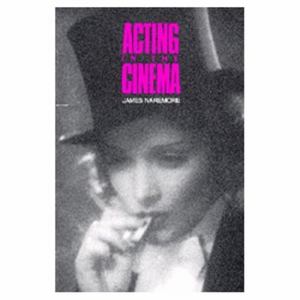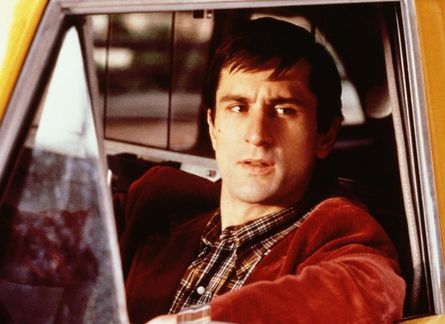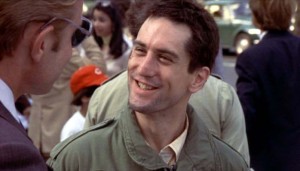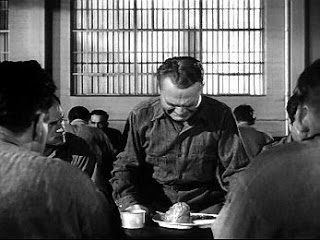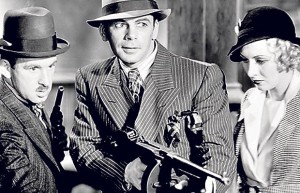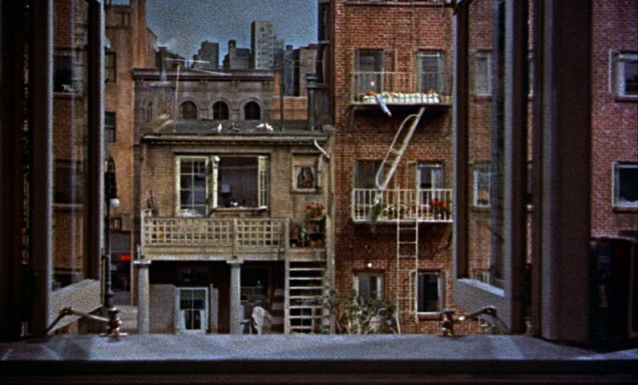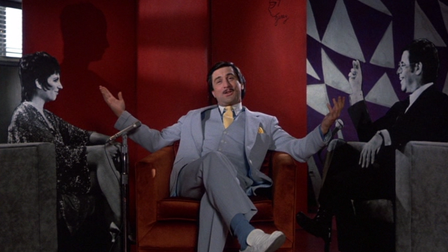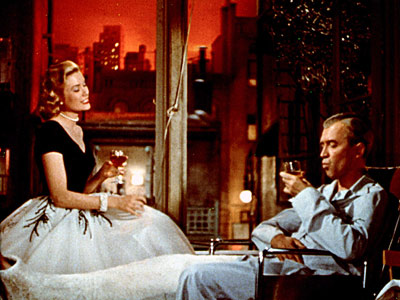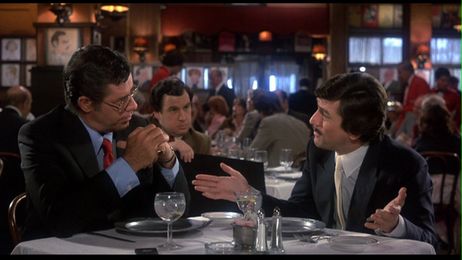Written in mid-February 2013 for the publication of the Chinese edition of James Naremore’s Acting in the Cinema, which was originally scheduled for publication in China in 2014. It finally came out much later. This is the second Introduction I’ve written for a Chinese translation of a Naremore book; my previous one was for More Than Night: Film Noir in its Contexts. — J.R.
In film criticism, acting tends to be the most neglected single aspect of cinema — one that’s especially difficult to describe and also easy to confuse with other skills and effects in filmmaking, to cite only two of the reasons for its neglect. Often not knowing whose creativity and whose creative decisions are the most relevant, we easily become confounded over issues of intentionality, agency, credit, and defining precisely what it is that we’re responding to, which becomes all the more difficult due to the mythological auras that surround famous actors.The few times that I’ve tried to write about actors myself in any detail, such as Kim Novak, Marilyn Monroe, Eric von Stroheim, and Charlie Chaplin, I’ve concentrated mainly on those auras, and in the case of the latter two, I’ve even found it hard to separate their acting from their writing and directing. (According to Jean-Marie Straub, one can’t even separate Chaplin’s editing from his acting, because what made him a great editor, in his opinion, was knowing precisely when a gesture began and when it ended.) Similarly, when we describe a film as “perfectly cast,” we may be praising the producer or director more than any particular actor.
The neglect of acting is equally striking in both journalistic and academic writing about film. But our expectations are somewhat different with journalistic reviewers, who are generally allowed to be impressionistic and reach for showy poetic effects without having to worry as much about specific details. This is especially true of Manny Farber and Pauline Kael, perhaps the two American film critics best known for their writing about movie actors, because what they’re usually telling us isn’t so much what such actors as James Cagney and Robert De Niro are doing as how they’re making us feel when they’re doing it, and how certain contexts determine our responses. Furthermore, Farber’s punchy, fancy, almost untranslatable prose is usually more of a performance in itself than any actor’s performance he’s writing about: “A Cagney performance under the hands of a [William] Keighley is ingrained in a tight, malignant story. One remembers it as a sinewy, life-marred exactness…” And here is Kael describing the title hero of Taxi Driver: “This man is burning in misery, and his inflamed, brimming eyes are the focal point of the compositions. Robert De Niro is in almost every frame: thin-faced, as handsome as Robert Taylor one moment and cagey, ferrety, like Cagney, the next—and not just looking at the people he’s talking to but spying on them.”
Arguably, only in her final phrase does one find Kael describing what De Niro is actually doing, as opposed to the overall impression he gives. Both critics are trying to place performance within other expressive frameworks — stories, memories, compositions, frames — in order to make it legible, and Farber is also pretending (unnecessarily, I think) to restrict his description of Cagney to films directed by William Keighley. But consider how much concrete detail James Naremore manages to pack into his own description of Cagney over a different set of movies, made later in his career: “Middle age gave him a slight paunch, and his dancing movements were always pushed toward the grotesque; he became a mixture of urban leprechaun, stevedore, and tiny gorilla, evoking litheness and strength rather than the apish dullness of[Paul] Muni’s Scarface. He often stood with his feet in a dancer’s turnout, his torso slightly forward, his thick arms bowed in front of his body, his stubby hands curled as if ready to make a fist.”
One of the reasons why Naremore is my favorite academic film critic is that one doesn’t have to be an academic in order to read and appreciate him — even though he gives us a far more solid grounding to his observations than we can expect to find in critics such as Farber or Kael.It’s characteristic of the author’s modesty and caution that he’s already warning the reader about what his book won’t be doing in his opening sentence (“…it won’t teach anyone how to become a successful performer”), after declaring that his subject is “the art of film acting”. But even here, he’s reluctant to fully acknowledge how much of human behavior and human perception in general impinges on his topic, with the result that he has to address those matters as well.
Maybe this is because, in his own quiet way, Naremore is a bit of an actor himself, as all the best writers are. As Orson Welles, one of his favorite filmmakers, once noted of the great 19th century novelist Charles Dickens, “Dickens was an actor — and he was not a writer who acted, he was an actor who wrote. I believe it was his real vocation.” And significantly, one of Welles’s key arguments in This is Orson Welles, his book-length conversation with Peter Bogdanovich, is that the most neglected aspect of the art of film is acting, not directing, And like his idol Welles, Naremore is also something of a magician — focusing on what he’s doing with his right hand so that we won’t always notice what his left hand is doing at the same time.
Indeed, part of what makes Acting in the Cinema such a singular achievement isn’t only that it moves from theory (in Part One) to practice (in Parts Two and Three), meanwhile offering a fairly comprehensive history of acting techniques and acting styles in relation to film. It also uses theory to give us philosophical reflections about such diverse matters as how we behave socially in the world outside films, and what we’re implicitly accepting when we watch a television news broadcast as well as a fiction feature. And when, turning to practice, Naremore analyzes seven specific film performances — starting off with Lillian Gish and Chaplin and then taking on the very wide affective and stylistic range offered by Marlene Dietrich, Cagney, Katherine Hepburn, Marlon Brando, and Cary Grant — he is also proposing how we can better understand films in their entirety rather than isolating the acting in them from other aesthetic factors. This culminates in his fascinating studies of two films, one of them a key work about spectatorship (Rear Window), the other a key work about performance (The King of Comedy), to conclude his multifaceted discussion.
But it doesn’t do justice to these two concluding chapters to characterize either of these films quite so simply. Naremore’s discussion of one of Alfred Hitchcock’s finest thrillers — immediately following his analysis of Cary Grant’s performance in another one of Hitchcock’s very best thrillers, North by Northwest -– may be the most convincing and detailed close analysis of any film to be found in Naremore’s work as a critic, and part of what’s so impressive about it is the way it draws on so many of the elements that he’s been discussing over the previous dozen chapters. He’s especially insightful, I think, about Rear Window’s “subtle commentary on the rhetoric of movie acting,” which he explores in numerous ways, drawing in some of the earlier thematic strands of his book in the process (such as the discussion of Katherine Hepburn’s “boyishness” in relation to similar traits in Grace Kelly’s character). And his following chapter about The King of Comedy, made almost three decades later, largely focuses on the film’s power and thoughtfulness as a cultural critique about media and celebrity in which the diverse performative roles and styles of De Niro, Jerry Lewis, Sandra Bernhard, and several others in the cast are prominent elements in this critique.
In short, Naremore is showing us how acting in films is merely one form of presenting one’s self in the world, so that his subject, ultimately, is about the way we live, even though, as I’ve already suggested, his tone is far too modest to admit that he’s exploring such a wide canvas. At most, he offhandedly alludes to the philosophical depth of his discussion without rubbing our noses in it, as in his introductory note to his fifth chapter, on “accessories,” subsequently subdivided into “expressive objects,” “costume,” and “makeup”: “My remarks on this theme are grouped under the vague rubric of ‘accessories,’ but my real concern is with the ways persons and inanimate materials interact, so that we cannot tell where a face or body leaves off and a mask begins.”
Consider also Naremore’s account of how incoherence can be allowed for within the coherence of “intimate social behavior” that begins his previous chapter, followed about a page later by the startling yet apt observation that children start their lives as “Brechtian actors,” performing what they don’t feel, and then become “professional” actors in the very process of doing so.
To put it even more simply, writing about acting in the cinema ultimately means writing about everything, including the very shape of our lives, both inside and outside the category of the art of cinema. It’s no wonder, then, that Naremore can describe his own work here as “one of the more difficult projects I’ve undertaken”. It’s also an exciting and fruitful starting point for many diverse investigations and explorations that his readers can take on their own.
Jonathan Rosenbaum

